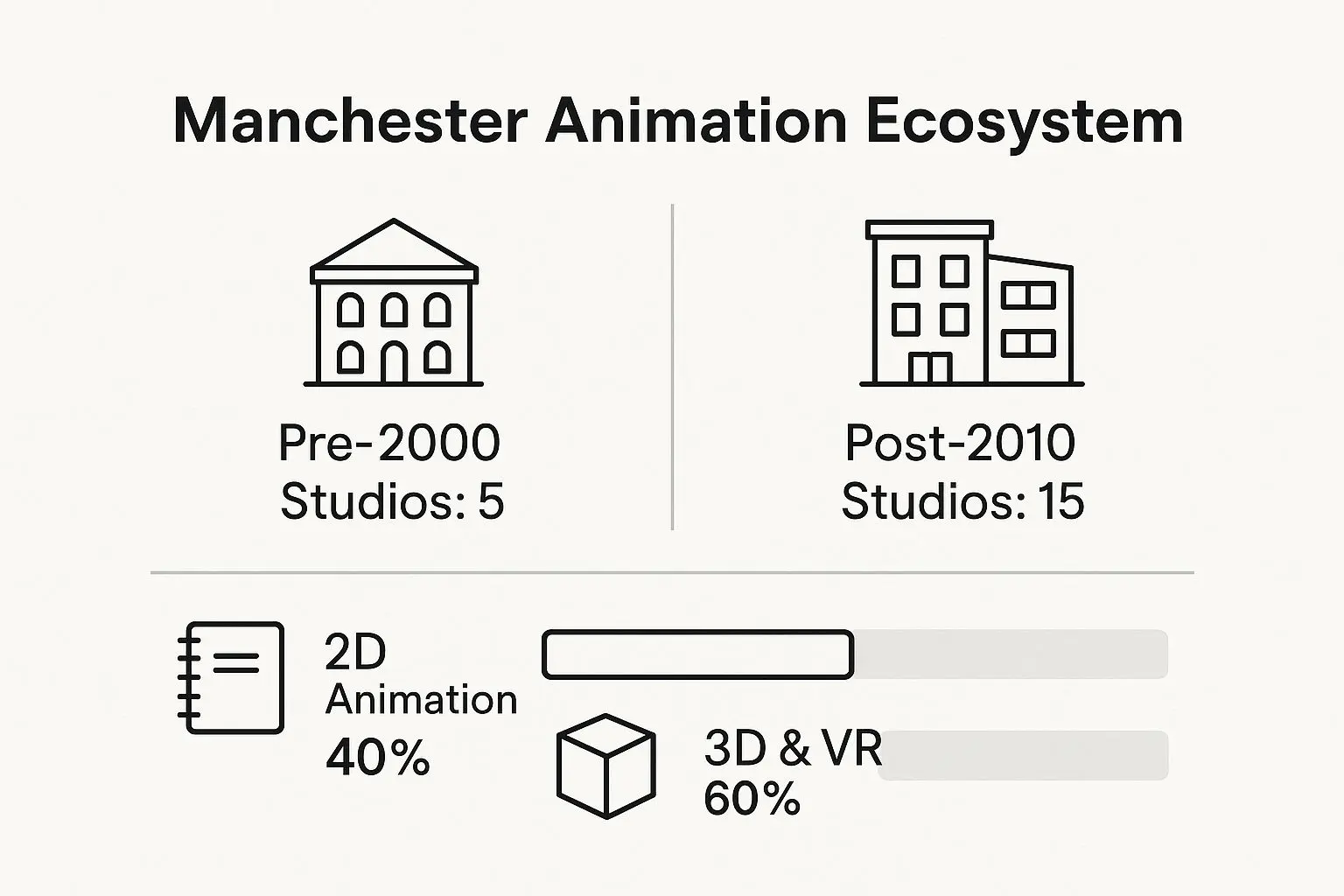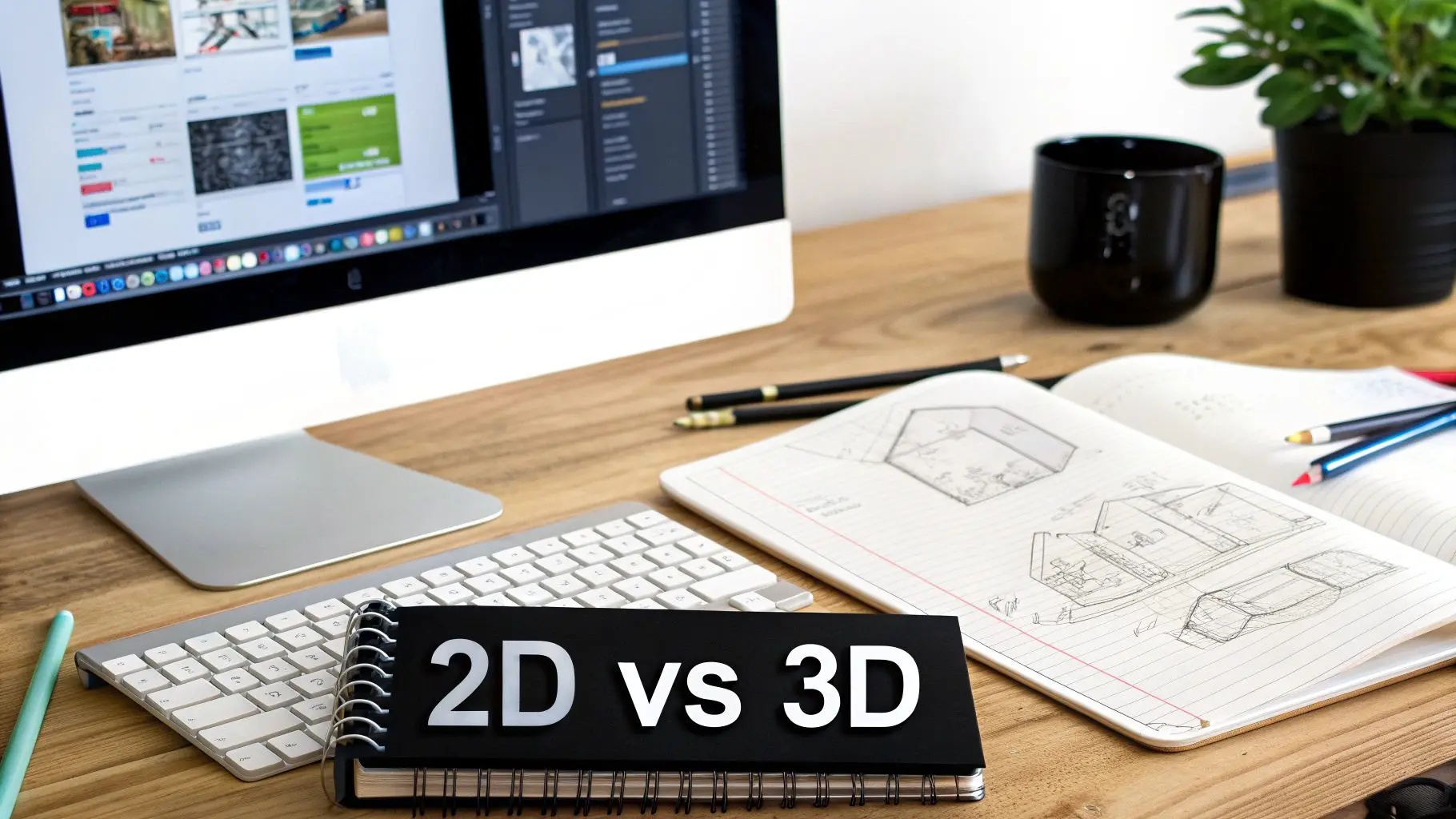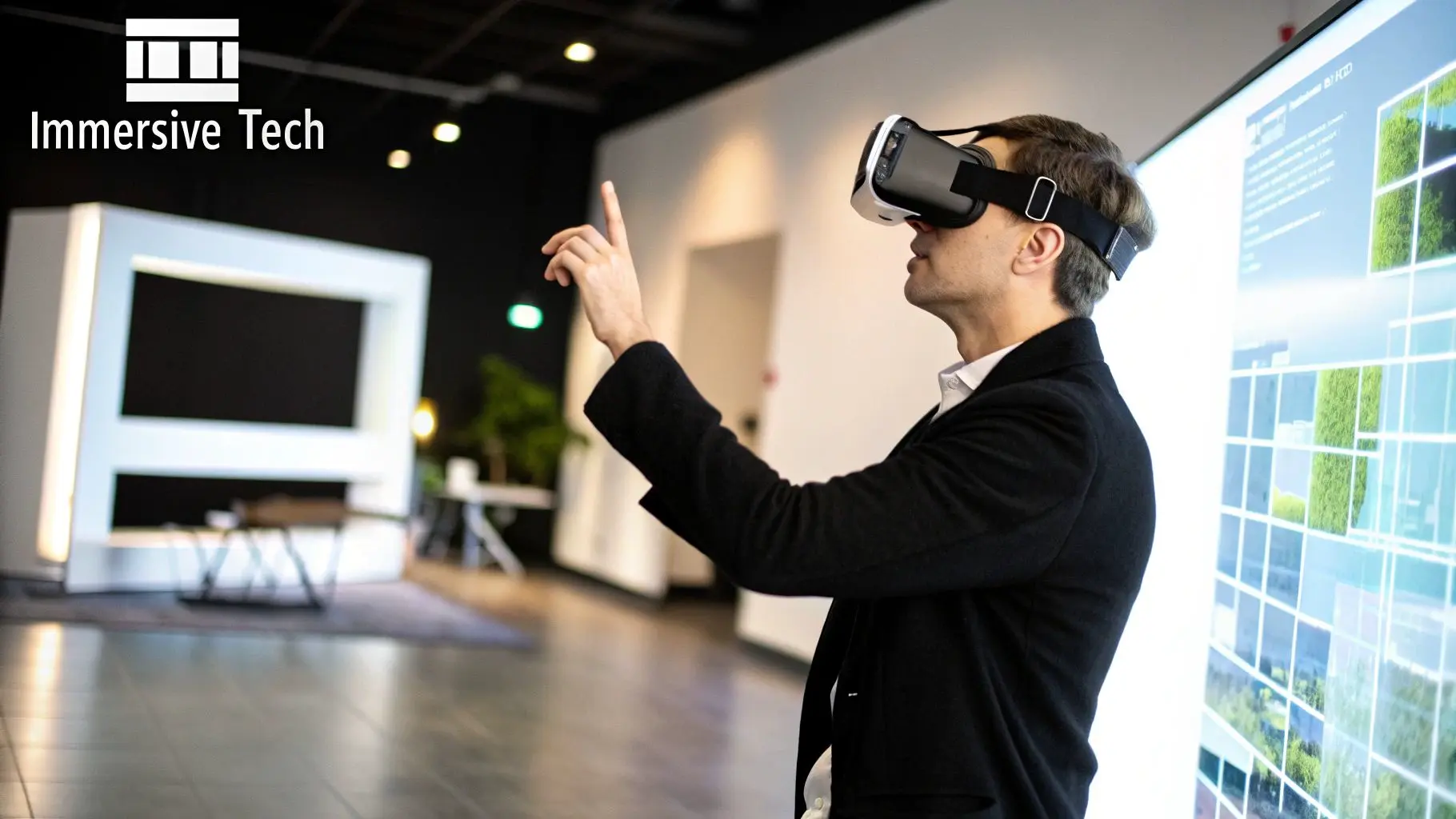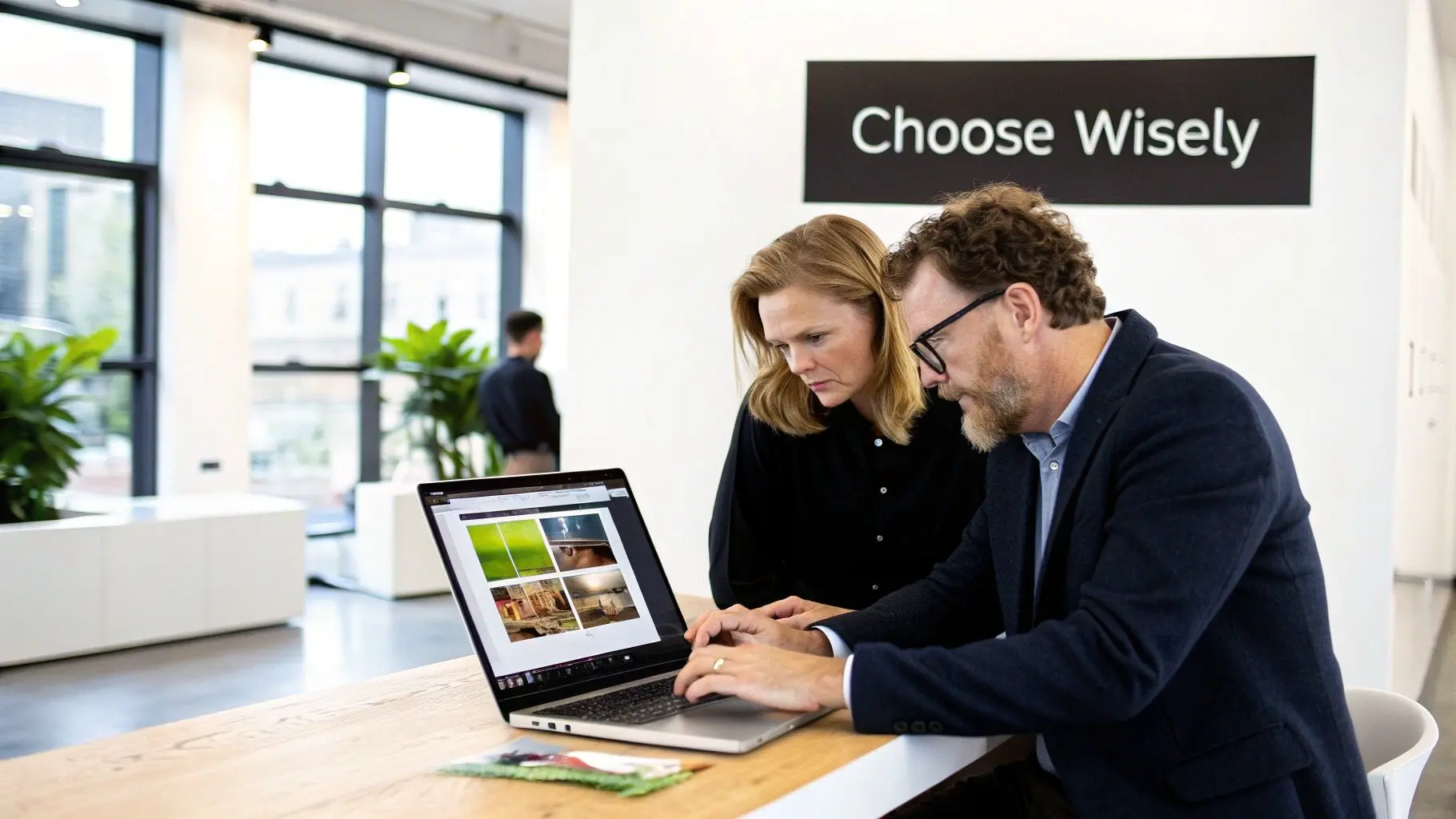3D Animation Services in the UK: Studio-Quality Production from Pitch to Delivery
If you're looking for a top-tier animation studio, Manchester is a name that consistently comes up, and for good reason. It's more than just a city; it's a genuine creative powerhouse in the UK, where a rich artistic legacy fuels modern production. Choosing a studio here means plugging into an ecosystem where broadcast-quality storytelling and technical innovation thrive side-by-side.
Why Manchester Is a UK Animation Powerhouse
Manchester's reputation as a centre for animation isn't some recent trend. For decades, it was the home of legendary studios that created some of the most iconic children's television we grew up with. That history has left a lasting legacy: a deep pool of talent skilled in everything from classic 2D techniques to complex 3D production. Today, that solid foundation supports an incredibly vibrant industry. The city's animation scene is a brilliant mix of seasoned veterans and nimble new studios that are constantly pushing the boundaries of digital media. It means that whether your project needs the charm of hand-drawn character animation or a photorealistic technical visualisation, the expertise is right here.
The Growth of a Creative Ecosystem
A massive catalyst for Manchester's growth has been the development of world-class infrastructure. The local animation industry has truly flourished, thanks in no small part to the magnetic pull of MediaCityUK, which has attracted giants like the BBC and ITV. This has created a network of specialised studios, making the city a hugely attractive base with its tight-knit creative community and competitive costs. The city's focus has also shifted with the times, embracing new tech at an impressive pace. This infographic gives a snapshot of that evolution, showing not just the growth in the number of studios but the clear pivot towards 3D and immersive technologies.

The data speaks for itself. With 60% of production now focusing on 3D and VR, it’s clear Manchester isn't just keeping up; it's looking ahead to the future of digital content.
A Hub for Innovation and Collaboration
All this talent and so many resources concentrated in one place fosters a uniquely collaborative spirit. Studios in Manchester are known for sharing knowledge and even partnering on complex projects, which creates a robust support system that ultimately benefits the client. This environment has cemented the city as a go-to destination for projects that demand both technical precision and creative flair.
By combining a rich heritage in storytelling with a firm grasp on future-facing technologies like VR and real-time rendering, Manchester provides a complete solution for brands and creators aiming to make a lasting impact.
For any business, picking an animation studio in Manchester means you're tapping directly into this powerful network. You don’t just get a supplier; you get a partner who has the latest tools and a deep, intuitive understanding of narrative and visual communication. To help you sort through the options, have a look at our guide on the best animation studios in Manchester, which dives deeper into the city's top creative teams. It’s this rich environment that ensures your project is in expert hands from start to finish.
Exploring Core 2D and 3D Animation Services

When businesses first connect with an animation studio in Manchester, the conversation almost always starts with two big options: 2D and 3D. But these aren't just different looks; they are entirely different ways of telling a story. Each has its own strengths, making them suited for very different commercial goals. Think of 2D animation as a living, breathing illustration. Everything happens on a flat plane, brought to life with lines, shapes, and colour. This style is fantastic for clarity and explaining abstract ideas, which is why it’s so popular for explainer videos and brand stories where you need a bold, graphic message to cut through the noise. 3D animation, on the other hand, is like being an architect and a filmmaker all at once. You’re building a tangible, detailed world inside a computer, creating models that have depth, texture, and weight. This allows for lifelike camera movements, realistic lighting, and shadows, making it perfect for product visualisations, architectural fly-throughs, or any story that needs a deep sense of realism.
From Digital Skeleton to Final Polish
Bringing these animated worlds to life isn’t magic, it’s a blend of highly technical and creative processes. Two of the most critical steps any professional studio will handle are rigging and rendering.
- •Rigging: This is where we build a digital “skeleton” for a character or object. This internal framework is what allows an animator to make a model move naturally. It defines how a limb bends, how a face shows emotion, or how different parts of a machine interact. A good rig is the invisible foundation of a believable performance.
- •Rendering: This is the final, heavy-lifting stage. The computer takes all the data in a scene, the lighting, textures, reflections, and shadows, and processes it to generate the finished, individual frames. To give you some perspective, a single minute of high-quality animation can require rendering 1,500 individual images.
These skills are fundamental to creating content that looks incredible, whether it’s for a TV ad, a web series, or interactive media. Our team offers a whole suite of services, including specialised animation for video games, where these techniques are truly pushed to their creative limits.
Making the Right Choice for Your Project
So, 2D or 3D? The decision isn't just about looks. It’s a strategic choice that affects your budget, your timeline, and how your audience ultimately connects with your message. To help make things clearer, let’s break down the differences.
Choosing Between 2D and 3D Animation
Here’s a direct comparison to help you decide which animation style best suits your project's goals, budget, and timeline.
| Factor | 2D Animation | 3D Animation |
|---|---|---|
| Best For | Explainer videos, brand stories, abstract concepts | Product demos, realistic characters, immersive worlds |
| Visual Style | Stylised, graphic, illustrative | Photorealistic, detailed, cinematic |
| Production Time | Generally faster for simple projects | Typically longer due to modelling and rendering |
| Cost | More budget-friendly for most use cases | Higher initial investment for complex assets |
| Flexibility | Excellent for stylised motion and transitions | Unmatched for realistic camera movement and lighting |
The key is to match the animation style to what you’re trying to achieve. Are you explaining a complex service, or are you showing off a physical product? Answering that question will point you in the right direction and make sure your video has the impact you need. Ultimately, the best animation studio Manchester can offer will walk you through this decision, helping you find the perfect technique to tell your story. By understanding these core animation services, you’re already one step closer to a brilliant collaboration and a final product that truly shines.
The Rise of Immersive VR and AR Production

While 2D and 3D animation still dominate our screens, there's another kind of digital creation that’s breaking right through them. Immersive tech like Virtual Reality (VR) and Augmented Reality (AR) has officially left the realm of science fiction. Today, these are powerful tools that are genuinely changing how businesses train staff, showcase products, and connect with their customers. An animation studio in Manchester is in a prime position to lead this new wave, blending seasoned storytelling skills with serious technical know-how. The city's animation scene is a major player in the national industry, fuelled by creative hubs like MediaCityUK and an incredible pool of talent. This kind of specialism is exactly what helps keep the UK at the forefront of global animation. What makes this tech so different? It’s all about creating experiences, not just content. VR can transport a user to a completely new, simulated world, making it perfect for everything from high-stakes safety training to unforgettable brand events. On the flip side, AR layers digital information over our real world. Think of it like this: you can use your phone to see exactly how a new sofa would look in your own living room before you even think about buying it.
Building Worlds From The Ground Up
Crafting these immersive experiences involves a totally different production pipeline. You’re not just animating frames; you’re building entire interactive worlds. That demands a unique set of skills and tools.
- •Concept and Design: Every project kicks off with a clear idea. What’s the goal? Who’s the end user? We work closely with you to design an experience that feels intuitive and engaging, whether the objective is learning a new skill or exploring a digital product from all angles.
- •Engine Development: These digital worlds are built inside powerful game engines like Unity and Unreal Engine. These platforms are the foundation of the whole experience, handling everything from physics and lighting to how the user interacts with the environment.
- •Hardware Optimisation: A VR experience built for a powerful PC headset needs to be carefully adapted to run smoothly on a standalone device like the Meta Quest. Smart optimisation ensures the experience is seamless and accessible for everyone, no matter the hardware.
The fusion of artificial intelligence with immersive tech is pushing the boundaries of what’s possible at a dizzying pace. As detailed in this piece on AI-driven augmented reality and the acceleration of XR, VR, and AR technologies, AI is paving the way for more dynamic and responsive virtual experiences.
Real Impact And Tangible ROI
Beyond the initial "wow" factor, VR and AR deliver real, measurable value for businesses. A well-designed training simulation can slash accident rates and boost knowledge retention far more effectively than any printed manual. In the retail world, a slick AR app can seriously increase sales by giving buyers the confidence they need to make a purchase.
These aren't just tech demos; they are strategic business solutions. Immersive production transforms passive viewing into active participation, creating deeper engagement and leaving a lasting impression on the user.
Understanding the development journey is the first step towards a successful project. To get you started, we’ve put together a producer’s guide to virtual reality application development that breaks down the entire process. By partnering with a studio that gets both the creative storytelling and the technical nuts and bolts, you can turn these exciting tools into genuine, real-world results.
How to Choose the Right Animation Studio

Picking a partner for your animation project is a huge decision. It’s not just about finding a team with a slick-looking showreel; it's about finding a creative and technical ally who genuinely gets your goals and can bring your vision to life without any fuss. Get it right, and you’ll have a final product that hits the mark and gets results. But the wrong choice can lead to blown deadlines, budget headaches, and a video that just doesn’t land with your audience. You need to do a little homework, look past the shiny finished work, and get a feel for how a studio operates, communicates, and tackles problems. With the right questions and a clear idea of what you’re looking for, you can find an animation studio in Manchester that’s a perfect match for you.
Evaluating a Studio's Portfolio
Your first stop should always be the studio's portfolio, but you need to look with a strategic eye. Don’t just get dazzled by pretty pictures; look for relevance. Do they have projects from your industry? Does their style feel like it would fit your brand’s personality? A diverse portfolio is a great sign. It shows they’re a versatile and experienced team, capable of handling different tones, from straight-laced corporate explainers to charming, character-led stories. This tells you they can adapt their creative thinking to fit the brief, rather than just rolling out the same old style for everyone.
The real goal here is to find a studio whose work not only impresses you but feels like a natural extension of your own brand. Look for the quality of the storytelling in their projects, not just the technical wizardry on display.
Understanding the Production Process
A solid, well-defined production process is the spine of any successful animation project. Any professional studio worth its salt should be able to walk you through their entire workflow, from the initial chat to final delivery, with total clarity. Transparency is a massive green flag. Ask them about key milestones and where you'll need to give feedback or sign things off. A typical pipeline breaks down like this:
- •Briefing & Scripting: This is where the core message and story are locked down.
- •Storyboarding & Animatics: The visual blueprint of the animation starts to take shape.
- •Design & Asset Creation: The team develops the unique look and feel, from characters to backdrops.
- •Animation: Where all the pieces are brought to life with movement.
- •Sound Design & Final Polish: Adding the crucial audio layer and finishing touches.
Knowing these stages means you'll always know when your input is needed. It prevents any nasty surprises and keeps the project aligned with your expectations from day one.
Red Flags and Best Practices
Finally, knowing what to watch out for can save you a world of pain. Be wary of studios that are cagey about their process, give you vague or non-committal budget estimates, or are just poor communicators from the first email. These are often early warning signs of a disorganised team. A huge red flag is any request for "spec work", that's when someone asks a studio to create custom animation for free just to win your business. Reputable studios simply won’t do this. Their portfolio is the proof of their quality, and the real creative work should only start after you’ve both formally agreed to work together. Instead, look for a studio that asks lots of questions, shows a genuine interest in your business goals, and communicates clearly and professionally. That’s the hallmark of a collaborative partner and the foundation for a successful, and even enjoyable, project.
A Legacy of Creative Excellence in Manchester
When you're looking for a top-tier animation studio in Manchester, you're not just hiring a team; you’re tapping into a rich history of creative energy and technical grit. A perfect example is Studio Liddell. Their broadcast pedigree, stretching all the way back to 1996, isn't just a number, it’s a mark of resilience and deep-seated expertise that defines the city’s best creative houses. This kind of legacy means more than just being around for a long time. It speaks to a proven track record, forged by delivering high-stakes projects for giants like Sky Kids, the BBC, and Disney. Spending decades in the demanding world of broadcast television builds a level of professionalism and a rock-solid process that today’s commercial and B2B clients benefit from directly. Manchester's animation scene has deep roots. One of the biggest moments was the founding of Cosgrove Hall Films in 1976. That legendary studio gave us classics like 'Dangermouse' and became a cornerstone of the entire UK animation industry. While it closed in 2009, its spirit lives on, inspiring the generations of animators and studios that followed. You can dive deeper into Manchester's animation company history on kilogramme.co.uk to see just how foundational its influence was.
From Broadcast Series to B2B Solutions
All that experience producing entire television series translates perfectly into a smooth, dependable production process for corporate projects. It doesn't matter if it's a short explainer video for a complex piece of tech or a dazzling TV commercial; the core principles of getting it right are exactly the same. A background like this proves a studio has mastered a few crucial things:
- •Scalable Pipelines: They have battle-tested workflows that can handle anything from a single animated short to a multi-episode series without ever sacrificing quality.
- •Clear Communication: They bring a structured, no-surprises approach to collaboration. You'll find defined stages for feedback and approvals, keeping the project on track and perfectly aligned with your vision.
- •Technical Problem-Solving: Over years of meeting strict broadcast standards and impossible deadlines, they’ve learned how to tackle any creative or technical hurdle thrown their way.
A studio with a broadcast pedigree doesn't just make things look pretty. They deliver a professional, predictable, and genuinely collaborative experience from the first conversation to the final file. That's the real difference between a supplier and a creative partner.
Showcasing Proven Results
At the end of the day, the work speaks for itself. A studio's portfolio is where the trust is built, showcasing tangible examples of award-winning projects and technically complex animations. It’s about demonstrating a flair for creative problem-solving that goes way beyond a simple showreel. Take, for instance, the imaginative world of BooSnoo, created for Sky Kids. This project highlights a studio's ability to develop creative IP from scratch. On the other hand, complex visualisations for clients like GeoEnergy NI prove they can take incredibly difficult subjects and make them crystal clear and compelling. This blend of creative spark and technical precision is what really sets a leading Manchester studio apart. It’s this deep well of experience that allows them to take a simple brief and transform it into an exceptional piece of communication that gets real, measurable results.
Frequently Asked Questions About Animation Production
Stepping into your first animation project can feel like exploring a new world, and it's only natural to have a few questions. To help you get your bearings, we've pulled together the most common queries we get from new clients. Here are the clear, straightforward answers you need to start your project with an animation studio in Manchester with total confidence.
How Much Does An Animation Project Typically Cost?
This is always the first question, and the honest answer is: it varies. The final cost of any animation is a mix of a few key ingredients: the style you choose (2D is often simpler than 3D), the total running time, and the overall complexity of what's on screen. For example, a straightforward 60-second 2D explainer video could start from a few thousand pounds. On the other end of the spectrum, a high-end 3D advert filled with detailed characters and rich environments is a much larger investment. Any good studio will give you a custom quote based on a solid brief, so you know exactly what you’re paying for.
What Does A Typical Animation Timeline Look Like?
Great animation can't be rushed, so a little patience goes a long way. For a standard 60-to-90-second animated video, you can generally expect the journey to take between 6 to 10 weeks from the first script draft to the final, polished file. That timeline is broken down into clear stages: scripting, storyboarding, design, the actual animation work, sound design, and, of course, dedicated rounds for your feedback. If you're looking at something more complex or even an entire series, the timeline will be longer and planned out in detail right from the start.
What Do I Need To Provide To Get A Quote?
The secret to a quick, accurate quote is a clear, concise brief. The more you can tell a studio upfront, the better they can understand the scope of the work and give you a realistic price. Ideally, your brief should touch on these points:
- •What's the main goal of the project and who are you trying to reach?
- •What's the ideal length for the final video?
- •Do you have any style references? Links to other videos you love are perfect.
- •Is there a script or a list of key messages you need to get across?
- •What are your rough deadline and budget parameters?
How Involved Will I Be in The Creative Process?
The best animation comes from true partnership. A professional studio won't just disappear for weeks and come back with a finished video. Instead, we follow a structured, collaborative process with key approval stages built-in, making sure you’re part of the journey.
You'll have the chance to give feedback and sign off on the script, the storyboard, the design concepts, and the final animation. This open approach means the final product truly matches your vision, with absolutely no surprises at the end.
It's this clear, consistent communication at every milestone that makes the whole process smooth and leads to a result everyone can be proud of. Ready to bring your ideas to life with a team that has been delivering world-class animation since 1996? Studio Liddell combines broadcast experience with technical expertise to create stunning visual content that gets results. Book a production scoping call with our team today.